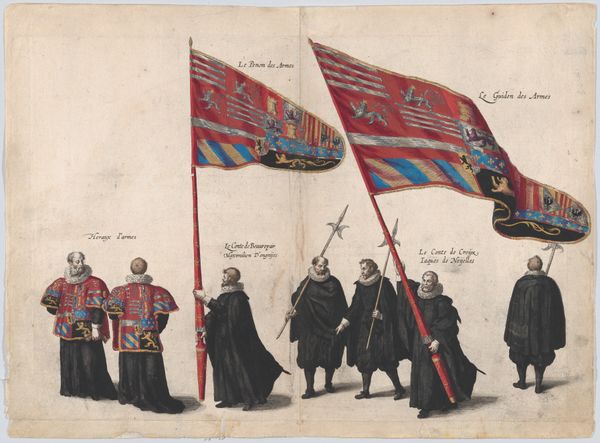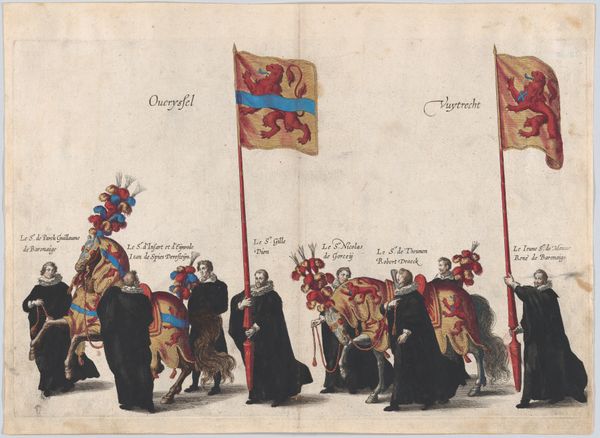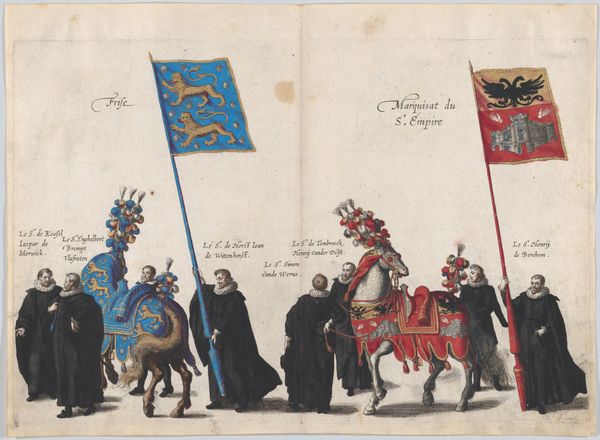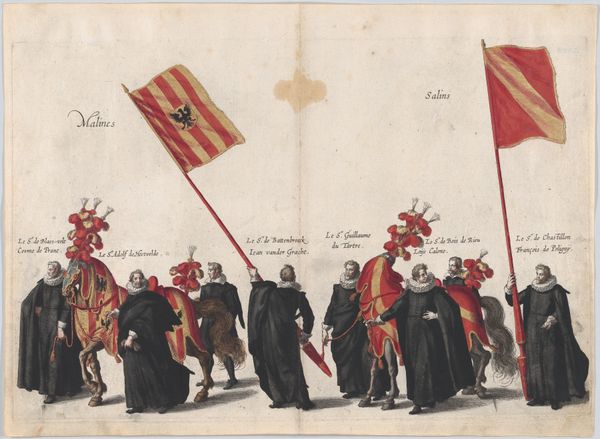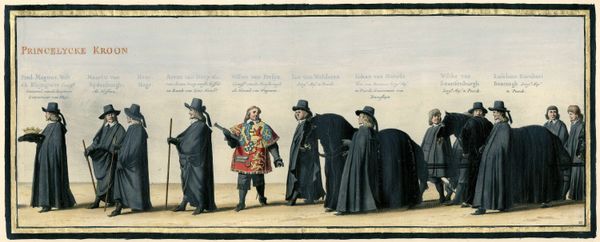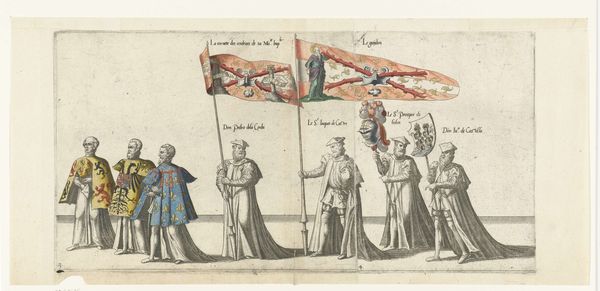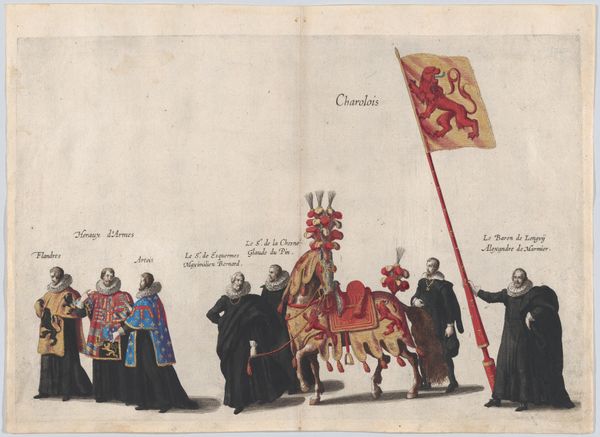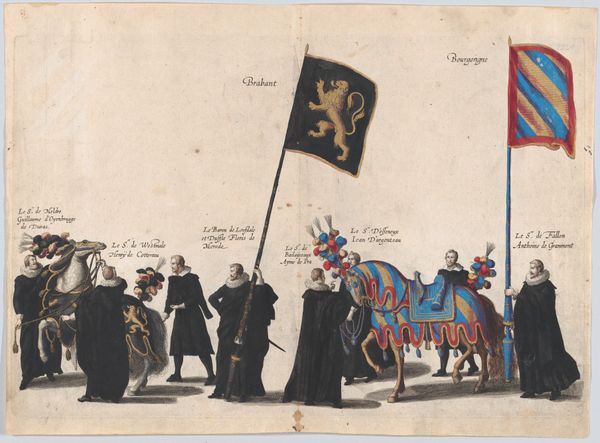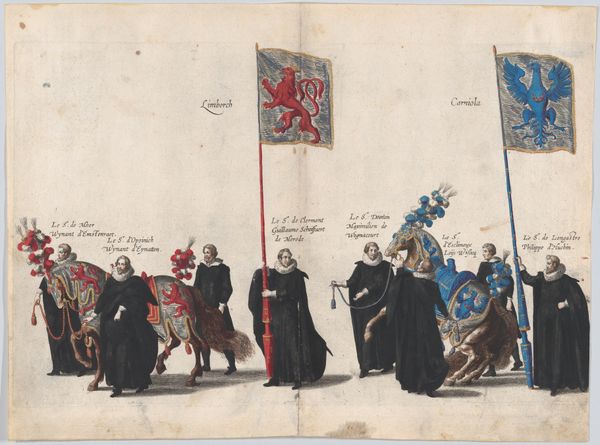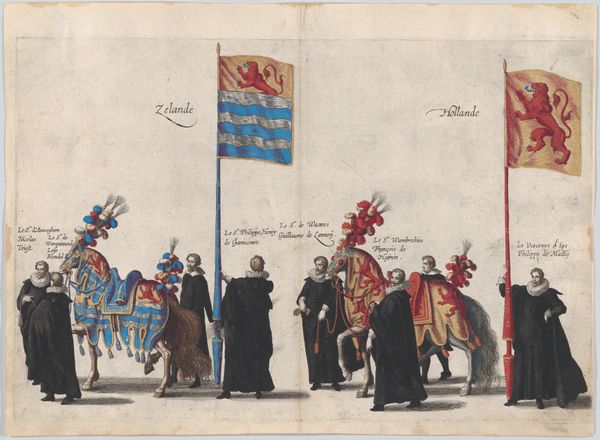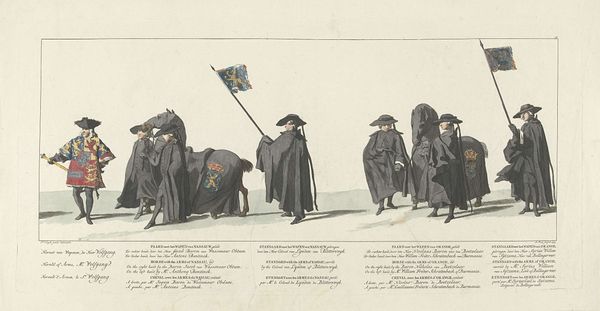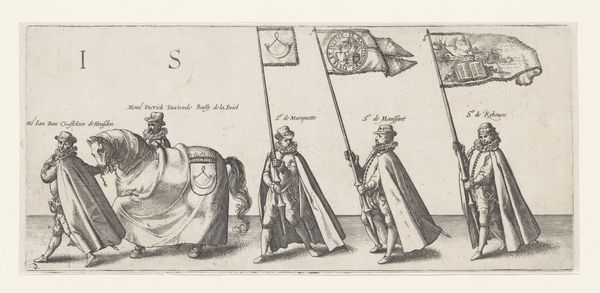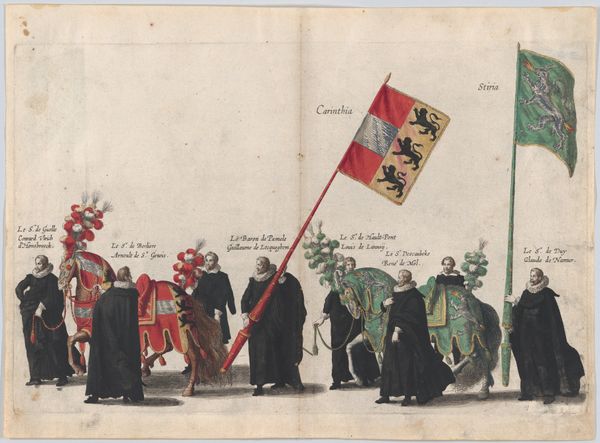
print, engraving
#
narrative-art
#
baroque
# print
#
group-portraits
#
history-painting
#
engraving
Dimensions: height 225 mm, width 565 mm
Copyright: Rijks Museum: Open Domain
Curator: Pieter Nolpe’s engraving, "The Funeral Procession of Frederik Hendrik, Plate no. 18," created in 1651, offers us a glimpse into a specific moment in Dutch history, meticulously rendered. What are your initial thoughts? Editor: It strikes me as austere, even with the pomp suggested by the title. The somber colors and regimented figures suggest a society bound by strict codes of conduct and deeply entrenched hierarchies. Curator: The visual vocabulary of this print exemplifies Baroque conventions, evident in Nolpe's employment of detailed line work to define forms and the spatial organization achieved by his precise construction. Note the distinct planes and considered arrangement of figures. Editor: But it's more than just visual display; these figures aren’t merely types, but signifiers of power and order after Frederik Hendrik’s passing. I'm curious about how this print reinforces the authority of the House of Orange within a volatile socio-political context. Did it resonate beyond the elite? Curator: Consider how Nolpe's compositional decisions—the way he distributes weight across the image and manipulates contrasts of light and shadow—work to create visual harmony and balance. His control is absolute; it evokes a sense of measured solemnity, effectively setting the tone for reflection upon such an important figure's life and service. Editor: While that control certainly projects authority, does it also unconsciously mirror society's existing controlling apparatus? Aren't those ornate pennants practically nationalistic advertisements of identity, privilege, and wealth that ultimately alienate as much as they unite? Curator: Certainly the material choices, being an engraving, and the inherent limitations it sets forth offer compelling avenues for academic thought. Through analyzing negative and positive space or even deconstructing it formally following structuralist approaches to meaning formation, we start uncovering deeper levels of intent or insight. Editor: Yes, even the seemingly mundane detail tells a story, particularly with relation to sociopolitical meaning, because we realize just how much ideology may subtly creep into any artistic venture regardless the media employed by anyone irrespective intent. In all, it provides fascinating yet intricate layers onto a complicated narrative still worthy of conversation even now, so very far down timeline. Curator: An appropriate final note with this discussion completed as for what could possibly get covered through thoughtful study via this particular work—thank You!.
Comments
No comments
Be the first to comment and join the conversation on the ultimate creative platform.
